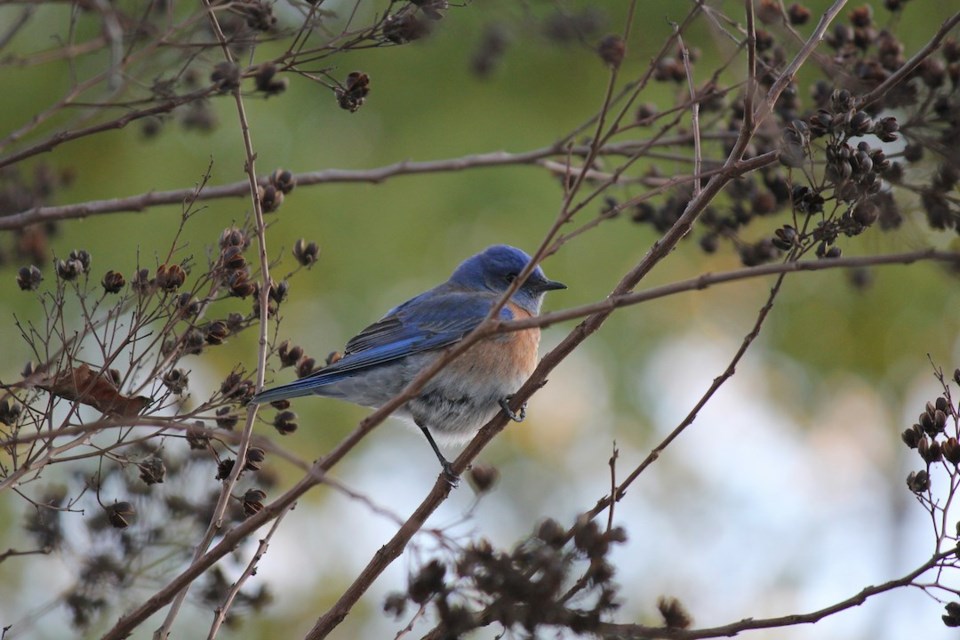Summer is over, the fall is upon us! How do we know?...The first geese flocks have already flown over in the last few days of September, with many thousands more to come before the last week of October. The geese, of four species, fly both day and night, and may be over land or water. Initially, they are heading for the Fraser Delta to fuel up, before many continue south to warmer winter destinations such as the Central Valley of California.
The big news of recent weeks locally, was the appearance of three western bluebirds at Gospel Rock, Gibsons, on Sept. 24. The birds were found and photographed by John Hodges, who put the word out immediately but only one other birder made it to Gospel Rock before the birds were dispersed by the attention of a Cooper’s hawk. This was the first record of a Western bluebird on the Sunshine Coast in more than 40 years. On Sept. 18 1983, Vince Bracewell, a well-known birder in the 1980s, reported a single western bluebird in a flock of five mountain bluebirds at Mile 8 on the Gray Creek FSR. There are other possible reports of the species in the ‘70s and ‘80s, but none are definitive. Historically, the species occurred in the Fraser Valley/Lower Mainland, but was extirpated by the 1970s, most likely from competition by the invasive starling for nest cavities. Western bluebirds are still common in the Okanagan Valley and there is a small population on southern Vancouver Island. A separate species, mountain bluebird, occurs on the Sunshine Coast as an uncommon spring migrant.
There is a mythology surrounding bluebirds as messengers of good fortune, with numerous American songs using the symbolism, for example, Judy Garland warbling of bluebirds in “Somewhere Over the Rainbow” in the Wizard of Oz. Perhaps the most famous bluebird reference is Vera Lynn’s World War II classic, “The White Cliffs of Dover.” This anthem to optimism, with its reference to bluebirds flying over the white cliffs, was recorded in 1942, in the darkest days of the war, and became an enduring beacon of hope in Britain. Ironically, the song was written by two Americans, who were not only unfamiliar with the white cliffs, but also British ornithology, as there are no bluebirds in England. (In fact, I don’t think there are any birds in the U.K. with any blue feathers!)
The symbolism surrounding bluebirds is not a surprise to me, as I have always viewed them as something special. If anyone ever asked, I would say that mountain bluebird is my favourite B.C. bird species.
To report your sightings or questions contact me at [email protected] or 604-885-5539. Good Birding.




